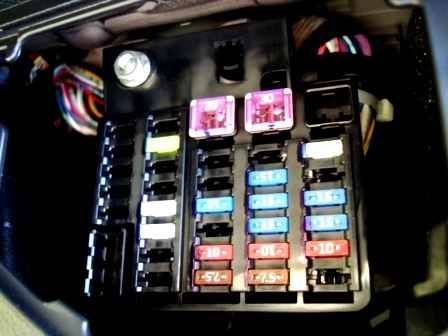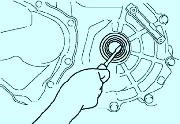Fuses are used to break the circuit when the current exceeds a certain value, and to protect elements and wires that can be damaged by too much current
A sudden increase in current is usually caused by a malfunction in the circuit, most often a short circuit.

The fuse box is located under the dashboard on the driver's side.
Each of the fuses protects its own circuit, its belonging to a particular circuit is indicated on the cover of the fuse box.

The fuse box contains blade-type fuses, the color of which corresponds to the fuse protection current.
In the event of failure of any element of electrical equipment, first of all, you should check the condition of the fuse.
The health of the fuse is determined by the presence of a wire conductor connecting the contacts of the fuse (Fig. 2).

To replace a failed fuse, first turn off the corresponding electrical circuit, remove the fuse from the socket with tweezers (Fig. 3).
If a newly installed fuse breaks instantly when energized, check the circuit being protected.
If the fuse protects several circuits, then they must be connected in turn in order to determine the faulty circuit by blowing the fuse.
The heater and air conditioner draw a lot of current, so the fuse box has a switch to protect their circuits.
If the circuit is opened by the switch, turn off the heater and air conditioner before pressing the switch's reset button.
Relay
A relay is an electronically controlled switch that is typically used as follows:
- - switches high currents remotely from the circuit in which this current flows, allowing the use of thinner wires and switch contacts;
- - has more than one control input unlike a mechanical switch;
- – Performs a timer function, such as setting the wiper interval.
If an electrical circuit controlled by a relay fails and the cause of the problem is probably the relay, listen to the relay while the system is on.
If the relay is working properly, you should hear a click when it turns on.
If the relay is OK, then the cause of the malfunction lies in the elements or connecting wires.
If the relay does not work, it means that it does not receive the main power supply or control pulse, or the relay is faulty.



Most of the relays are installed in the fuse and relay box located in the engine compartment.
Some specialized relays are located separately or in separate blocks under the instrument panel and in the engine compartment.










